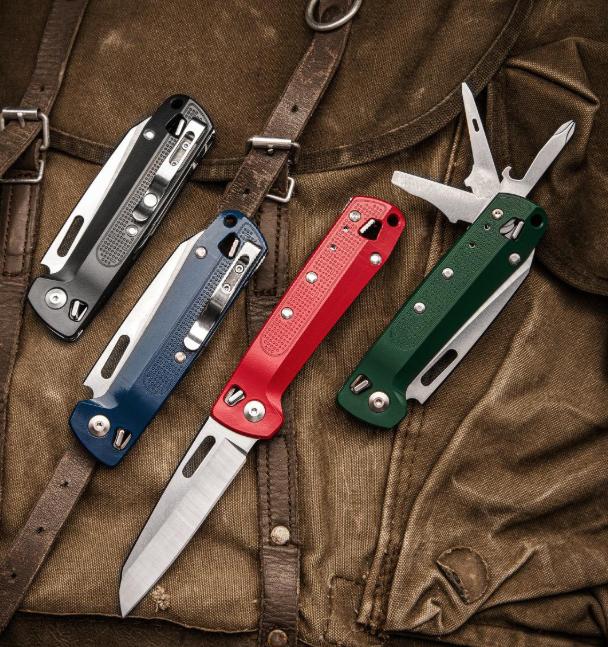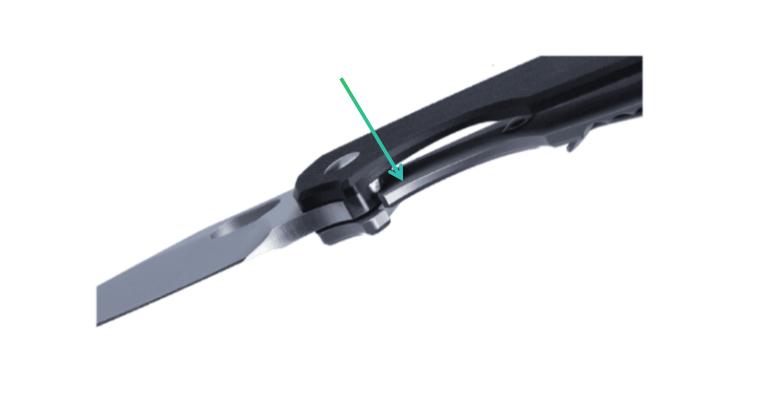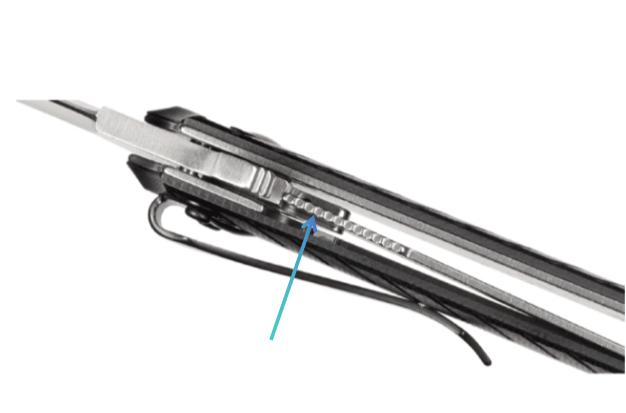Choosing the right locking mechanism for your folding knife is essential for safety, functionality, and ease of use.
Among the many pocket knife lock designs, frame locks and liner locks are two of the most popular options, each offering unique strengths.
In this guide, we’ll break down what sets these opening mechanisms apart and help you make an informed choice based on your needs.
What does a knife lock do?
A knife lock is a safety feature in folding knives that prevents the blade from accidentally closing during use. Once the blade is fully opened, the lock engages, securing it in place. Here’s why this is critical:

- Stability: A locked blade mimics the strength of a fixed-blade knife, offering safer and more reliable performance for demanding tasks.
- Safety: The lock prevents the blade from snapping shut on your fingers during use, particularly under pressure.
- Longevity: By keeping the blade securely open during operation, locks reduce unnecessary wear on the blade’s edge and pivot point, extending the knife’s lifespan.
Frame Lock: A Durable and Robust Mechanism
What is a frame lock?

The frame lock is a special feature on some knives where a piece of the handle slides in to hold the blade steady.
Designed by famous knife maker Chris Reeve in the 1980s, this lock is part of the handle itself, making it very strong and dependable.
How to use
- Opening the Knife: Push the thumb stud or flipper tab to pivot the blade open. The frame lock will automatically snap into place, securing the blade.
- Closing the Knife: Shift the frame lock bar to the side with your thumb and carefully fold the blade back into the handle. Always keep your fingers clear of the blade’s path during this process.
Notable models
- Kershaw Leek: Designed by Ken Onion, this sleek knife features a frame lock that ensures the blade stays secure.
- Chris Reeve Sebenza: A flagship model from the inventor of the frame lock, the Sebenza is celebrated for its precision craftsmanship and durability.
Start Working with a Professional Now
Liner Lock: A User-Friendly Mechanism
What is a liner lock?

Invented by Michael Walker, the liner lock is a thin, spring-like metal liner inside the knife handle that moves into position to lock the blade when opened. It’s prized for its simplicity and effectiveness, making it a go-to choice for everyday carry (EDC) knives.
How to use
- Opening the Knife: Pull the blade out of the handle until the lock snaps into place with a distinct “click.”
- Closing the Knife: Push the spring-loaded liner to the side and fold the blade back into the handle, keeping your fingers away from the blade’s path.
Notable models
- Spyderco Tenacious: Known for its affordability and solid performance, this knife features a reliable liner lock that secures the blade during use.
Frame Lock vs. Liner Lock: Key Comparisons

Ease of use
- Frame Lock: The locking bar is part of the knife’s handle, requiring you to push it aside to release the blade. While sturdy, this mechanism may be slightly harder to use for left-handed users or those with smaller hands.
- Liner Lock: The spring bar inside the handle is generally easier to operate, making it a great choice for frequent opening and closing.
Durability
- Frame Lock: Built into the handle itself, frame locks are typically stronger and more durable, especially when made from high-grade materials like titanium or stainless steel.
- Liner Lock: While reliable, the thinner spring bar in a liner lock may wear out faster over time, particularly with heavy use.
Maintenance
- Frame Lock: The exposed structure of a frame lock makes it easier to clean and remove debris.
- Liner Lock: With its internal spring bar, a liner lock may require a bit more effort to clean but still benefits from regular lubrication to maintain smooth operation.
Safety and Reliability
Both locks are dependable when designed and manufactured properly. However, frame locks tend to feel more robust due to their direct integration into the handle.
Start Working with a Professional Now
How to Choose the Right Lock for Your Knife
Your choice between a frame lock and a liner lock depends on your priorities and how you plan to use the knife. Here’s a quick guide:
- Choose a Frame Lock if:
- You need maximum durability and strength.
- You prefer a knife for heavy-duty tasks.
- You want a lock that’s easy to clean and maintain.
- Choose a Liner Lock if:
- You prioritize lightweight and compact designs.
- You need a knife for everyday carry (EDC).
- You value ease of operation (easier one-handed operation) and frequent opening/closing.
Final Thoughts
Both frame locks and liner locks are excellent choices for folding knives, each catering to different preferences and use cases. Frame locks excel in durability and strength, making them ideal for heavy-duty applications, while liner locks offer simplicity, lightweight design, and ease of use for everyday tasks.
If you’re considering designing or manufacturing knives, understanding these mechanisms is crucial. At Kegani, we specialize in OEM knife manufacturing and can help bring your vision to life. Whether you’re a professional knife designer or a business owner looking to create high-quality knives, we’re here to help.
Contact us today to explore collaboration opportunities and learn more about our knife manufacturing services.

